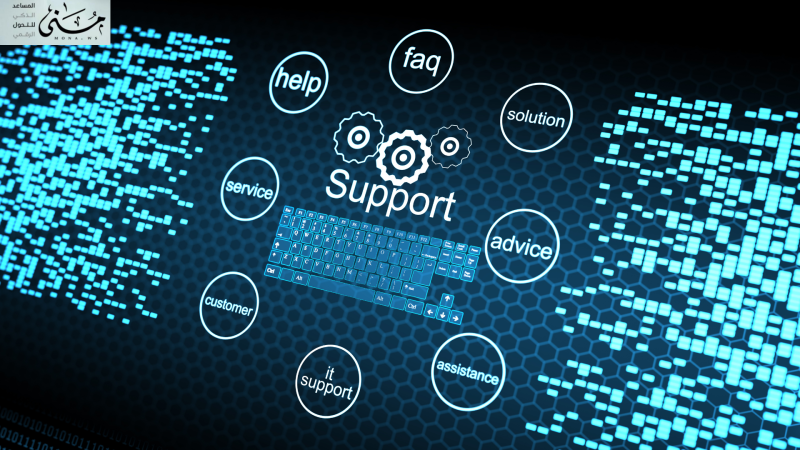Despite the great effort organizations expend in formulating policies and procedures, many of them remain limited to theoretical documentation, without real implementation at the level of daily operations. The reason? Simply put, the lack of linking policies to the organizational structure.
When there is no clear connection between a policy and the administrative unit that implements it, the policy remains isolated. It is unclear who is responsible for its implementation and who is responsible for its monitoring. This is where the urgent need arises to systematically link policies to the administrative structure. This connection is the bridge that transforms administrative guidance into practical practice and connects administrative texts to the operational reality.
Continue reading the article to learn more information.
What do we mean by “policy connectivity”?
Policy mapping is an organizational process that aims to align written policies and procedures with the organizational structure of the organization, so that each policy is assigned to a specific department or division, and the functions responsible for implementation or oversight are identified. This mapping also includes documenting the powers associated with each policy, the documents and forms associated with it, and integrating them within the electronic administrative system (such asDocSuite Structure).
Benefits of linking policies to the administrative structure
Linking policy to administrative structure is a fundamental step toward enhancing effectiveness and efficiency within organizations. When policy is closely linked to administrative structure, an organization can achieve numerous benefits that contribute to improving its performance and achieving its goals more effectively.
First and foremost, linking policy to the administrative structure contributes to *improved clarity and organization*. When policies are directly linked to the administrative structure, it becomes clear to everyone what the specific responsibilities and authorities of each department or unit within the organization are. This clarity reduces confusion and enhances internal organization, leading to more efficient implementation of processes and policies.
Other important benefits are:
🔹 1. Clarity of tasks and responsibilities
By linking policies, it becomes easier to know who is responsible for implementing each procedure, who has the authority to make decisions, and who must review or approve. This clarity reduces overlap between departments and prevents duplication or conflict in the implementation of processes.
🔹 2. Achieving institutional internal control
When policies are linked to organizational units, their implementation can be easily monitored and performance evaluated, enabling regulatory bodies to issue reports based on clear, pre-defined responsibilities.
🔹 3. Strengthening governance
Linking policies reflects the organization's commitment to transparency and accountability, documenting who carries out, who decides, and who reviews. This is fully consistent with modern governance requirements, which require a close link between procedures and the administrative structure.
🔹 4. Improving the effectiveness of daily work
When every employee knows what policies apply to their job and what procedures to follow, operations run more smoothly and there is less reliance on discretion.
In short, linking policy to management structure is an effective strategy for enhancing effectiveness and efficiency within organizations. By improving clarity and organization, enhancing accountability, improving decision-making, promoting transparency, and increasing effectiveness and efficiency, organizations can achieve their goals more effectively and operate in a more organized and transparent environment.
How is policy actually linked? Practical steps
The policy is linked to the organizational structure through several steps:
🧩1. Analysis of current policies
Start by gathering all of your approved policies and procedures, and review their content to determine the administrative and functional scope to which they apply.
🧩2. Aligning policy with organizational structure
For each policy, identify the unit or department responsible for implementing it, and define the roles (who decides, who implements, who reviews, who monitors).
🧩3. Documenting the relationship within the administrative system
Use tools like:DocSuite Structure to electronically link each policy to the relevant organizational unit, specifying the authorities, amendment history, and supporting documents.
🧩4. Disseminate the policy in a targeted manner.
After linking the policies, they must be disseminated to all concerned parties within the relevant departments, through official communication channels (such as internal mail, or digital control panels inDocSuite).
DocSuite: Connecting Policy with Management Intelligence
RepresentsDocSuite is a powerful tool that supports linking policy to organizational structure through advanced features, such as:
- Link policy to function directly within the electronic structure.
- Managing policy authority (who approves, who modifies, who implements).
- Record a change log and document each version of the policy.
- Linking policy to daily operations and associated correspondence.
- Monitor policy implementation indicators via a smart dashboard.
With these tools, policy alignment becomes a smart, measurable process, not just a documented procedure.
Practical examples of policy linking
✳️ Remote work policy
It should be linked to the human resources department (for organization), the information technology department (for equipment and technical support), and the operational departments (for monitoring and evaluation).
✳️ Leave Request Policy
Its implementation is linked to the Human Resources team, while approval is linked to the department supervisor, and the final review is the responsibility of the executive director.
In either case, linking policies enables the organization to track requests, document decisions, and evaluate compliance levels.
The consequences of the lack of policy linkage are:
- Ambiguity of responsibilities and conflict of roles.
- Difficulty in monitoring, evaluation and accountability.
- Suspending the implementation of some policies despite their adoption.
- The increase in personal interpretations and different interpretations of the regulations.
All this can only be avoided by systematically linking policies and supporting them digitally.
An organization seeking to develop its administrative work, increase compliance, and implement governance principles cannot neglect the issue of linking policies. This linkage is what transforms policy into practice, procedure into responsibility, and text into actual commitment.
Start now to analyze your policies, align them with your organizational structure, and activate this linkage using a powerful system likeDocSuite, moving from paper management to smart organization, from theory to implementation.
Executive powers: the most important link in linking policies
When discussing linking policies to organizational structure, the discussion is not complete without addressing the concept of powers. It is not sufficient to link a policy to an organizational unit unless the powers that enable that unit to actually implement that policy are also defined.
Policies, in essence, outline the general framework for institutional behavior, but it is the powers that translate them into actions on the ground. This is where the essence of successful policy-making lies: the powers must be aligned with the procedure, the procedure must be aligned with the position, and the position must be documented in the administrative structure.
✳️ Practical example
The "Financial Disbursement Order Approval" policy must be linked to a position such as "Finance Manager." The financial approval threshold must be specified, as must the entity that reviews and documents this approval. This intelligently links policies to account for job hierarchy, reduces conflicts of authority, and enhances oversight.
✳️ The role of smart systems such asDocSuite
In this context, systems such as:DocSuite Structure provides extensive capabilities for defining permissions and linking them to actions, such as:
- Specify who can see the policy.
- Who has the authority to modify or cancel?
- Who has the authority in specific cases?
- Accurately record change logs and implementation dates.
Through these capabilities, policy linkage transforms from a theoretical concept into a precise institutional practice, contributing to raising the level of commitment and strengthening accountability and governance tools.
 لماذا يجب ربط السياسات بالهيكل التنظيمي؟ تعرف على الإجابة من المقال
لماذا يجب ربط السياسات بالهيكل التنظيمي؟ تعرف على الإجابة من المقال









Comments
Add New Comment